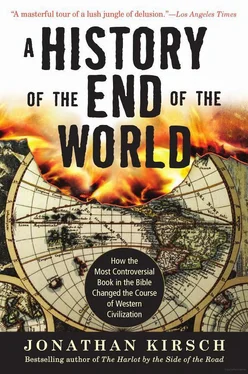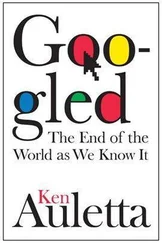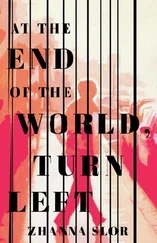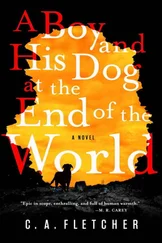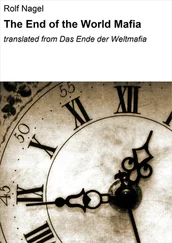Olivi was among the most prominent and influential members of the Spirituals. Drawing on the text of Revelation, they saw Francis of Assisi, founder of the Franciscan order, as “the Angel of the Sixth Seal,” 33and they imagined Francis and Domingo de Guzman (ca. 1170–1221), founder of the Dominican order, as the two witnesses of the end-times. And when Pope John XXII condemned the Spirituals as heretics, he succeeded only in confirming the zealous friars in their conviction that he was the real heretic or, even worse, the Antichrist himself.
Joachim of Fiore may have issued an oblique and intentionally vague warning that the Antichrist would come to sit on the papal throne, for example, but one of the Spirituals, a radical monk named Ubertino da Casale (ca. 1259–ca. 1330) was perfectly willing to name names. Da Casale insisted that the beast from the land and the beast from the sea, the satanic twins described in Revelation, were actually visions of two popes of his own era, Boniface VIII and Benedict XI, both sworn enemies and active persecutors of the Spirituals. And, following the example of the author of Revelation, da Casale worked out the numerical value of the letters in Benedict XI’s name as the dreaded number of the Beast, 666. 34
So the Spirituals were revolutionaries rather than reformers. For example, John of Rupescissa (ca. 1310–ca. 1366), a Franciscan monk from southern France who is sometimes known simply as “Brother John,” insisted that all of the afflictions foretold in Revelation would be visited on the world as punishment for the sins of the church. Inspired by visions of his own, he saw the Saracens, Turks, and Tartars who threatened medieval Christendom as the satanic armies that were gathering for the final battle of Armageddon. And he predicted that the last days would bring what he called “a horrendous novelty”: the common folk would take their own bloody revenge against both the gentry and the clergy, rising up against the rich and powerful “like earthworms devouring lions” and tearing down the palaces and cathedrals with their own hands. 35
“The world will be filled with indignation against the ostentation of wealth, and the oppressed peoples will rebel in an unexpected and sudden way,” warns John of Rupescissa in Handbook in Tribulation. “Many princes, nobles, and mighty ones will fall from the height of their dignities and the glory of their riches, and the affliction of the nobles will be beyond belief.” 36
His prophecy of what we would call a social revolution is decorated with all the eschatological trappings of Revelation. Based on an epiphany that he experienced “while the choir was singing the Te Deum during the Matins liturgy for the feast of the Virgin,” 37Brother John predicted that a pair of Antichrists would appear, one in the eastern realm of Christianity in 1365 and the other in the west in 1370. A Franciscan monk would be raised to the papal throne, and the new pope would appoint a French king to the throne of a world empire. Together, the pope and the emperor would make war on the two Antichrists, close the schism between the eastern and western churches, and call the Jews into communion with the Christians.
Indeed, John’s “greatest prophetic daring” was his conviction that the Jewish people would become “God’s new imperial nation.” Here was another novelty. At a time when the mystery plays of medieval Europe enshrined the old slander that the Antichrist would be the spawn of the Devil and a Jewish harlot, Brother John predicted an exalted role for the Jewish people in the end-times. Jerusalem would be rebuilt to serve as the glorious capital of a unified and purified faith during the millennial kingdom on earth. With explicit apologies to Augustine, who had warned against taking the reign of Christ on earth too literally, John explained that he had been granted a divine revelation of his own on the subject of the thousand-year Sabbath, and he insisted that his vision of the future was “most certain, infallible and necessary.” 38
Brother John’s attacks on the church grew so ferocious that even his superiors in the reformist Franciscan order felt obliged to confine him in one of their own prisons, and he was eventually put on trial by the papal court in Avignon on charges of heresy. Although he was not condemned to death by the cautious church authorities, who were apparently willing to entertain the notion that perhaps he was really in touch with God, the fiery monk remained in prison for the rest of his life, and all of his surviving apocalyptic tracts were written behind bars. 39Yet copies of Handbook in Tribulation circulated throughout Europe in its original Latin text as well as in French, German, Czech, and Castilian translations—an early example of the “medieval ‘best-sellers’” that were inspired by the book of Revelation. 40
Like Montanus and his pair of prophetesses in the second century, Peter John Olivi, Brother John, and their like-minded brothers and sisters were regarded by the church as dangerous provocateurs. As their sermons and tracts reached ever-larger audiences across medieval Europe, the apocalyptic radicals were seen to pose a direct threat to the high churchmen whom they demonized as tools of Satan and incarnations of the Antichrist. Inevitably, the culture war between the defenders and reformers of the church escalated into an open struggle in which blood was shed and lives were lost.
The Inquisitor’s Manual, composed in 1324 by Bernard Gui, singled out the so-called Beguines as an example of what can go wrong when Christians dare to read the book of Revelation for themselves. “They also teach that at the end of the sixth era of the Church, the era in which they say we now are, which began with St. Francis, the carnal Church, Babylon, the great harlot, shall be rejected by Christ, as the synagogue of the Jews was rejected for crucifying Christ,” writes Gui. “They teach that the carnal Church, which is the Roman Church, will be destroyed.” Such “errors and pernicious opinions,” he reports, were discovered “by lawful inquisition and through depositions and confessions”—that is, by interrogation under torture—but the grand inquisitor also allows that “many of them have chosen to die by burning rather than to recant.” 41
Gui, in fact, readily concedes that the Beguines are perfectly confident of their ultimate victory over the “spiritual or mystical” Antichrist—that is, the church itself—and “the real, greater Antichrist,” who “has already been born” and will reveal himself in 1325, “according to some of them,” or perhaps 1330, or possibly 1335. “They say that the first Antichrist is that pope under whom is now occurring the persecution and condemnation of their sect,” explains Gui. “Also, they say that after the death of Antichrist, the Spirituals will convert the whole world to the faith of Christ and the whole world will be good and merciful, so that there will be no malice or sin in the people of that era, with the possible exception of venial sin in some.” 42
Behind the rantings of the grand inquisitor is an intriguing example of what passed for heresy in the medieval church. The Beguines were women who lived communally, observed strict chastity, earned their livelihoods in nursing and teaching, and spent the rest of their days in fasting and self-mortification, mystical contemplation, and apocalyptic speculation. The houses of the Beguines, which appeared in Belgium, France, Germany, and Italy, offered a practical solution to the plight of single women who were otherwise unattached and unprotected. Not surprisingly, the Beguines aroused the suspicions of the Inquisition, but not only because they boldly condemned the church as “Babylon” and “the great harlot.” Just as threatening to men like Bernard Gui was the simple fact that they were women who had placed themselves beyond the authority of fathers and husbands. 43
Читать дальше
